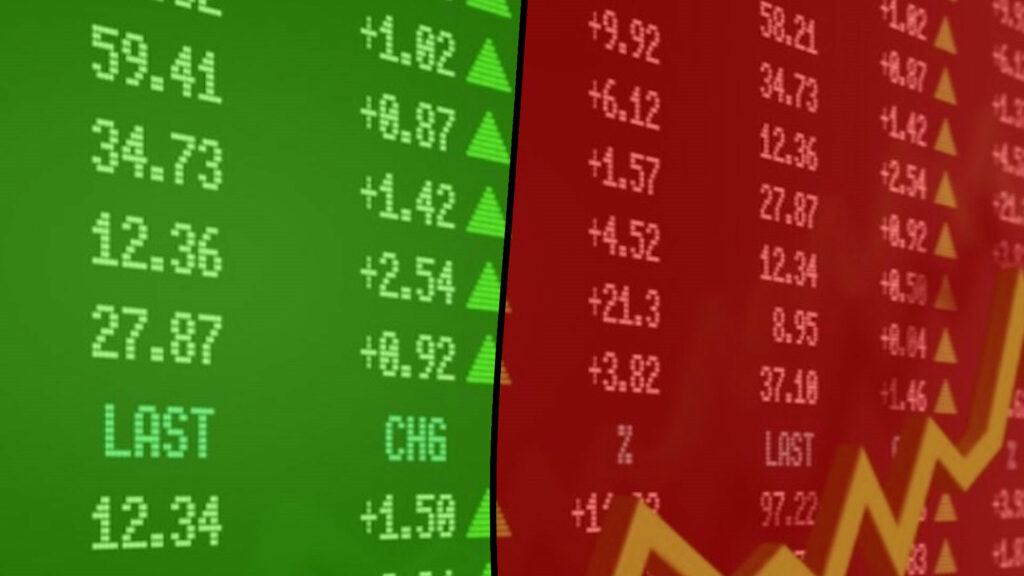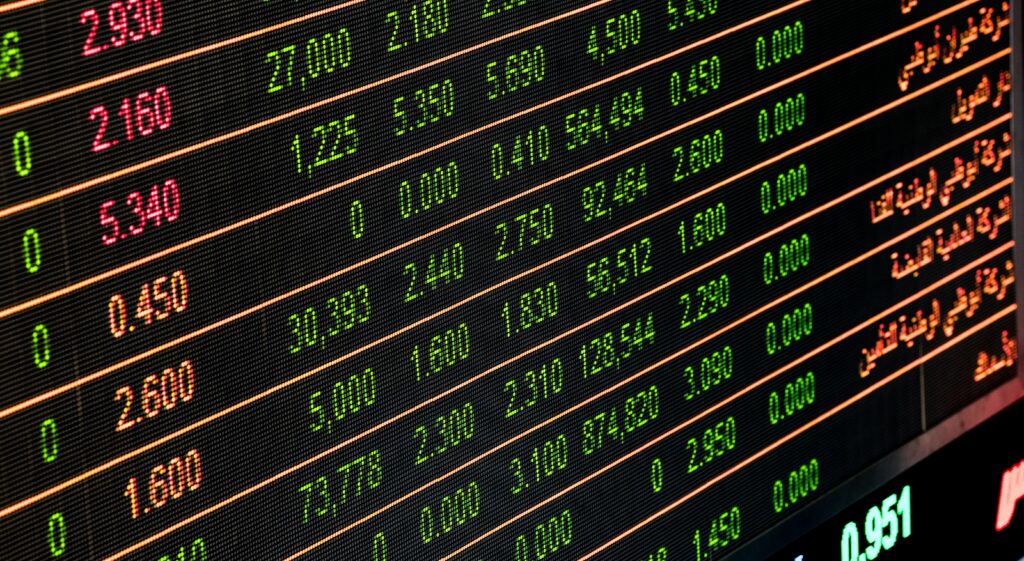Navigating the world of stocks can seem intimidating, especially if you’re just starting out. However, buying and selling stocks, or shares, is a fundamental aspect of building wealth in the investment realm. This article will break down the essentials of stock trading, offering clear steps and guidance. Whether you’re an aspiring trader or a curious beginner, we’ll walk you through the process and explain how to buy and sell stocks along with all the different order types you can utilize to do so.
Before we begin, there is one thing we do have to go over and that is the Bid and Ask spread. The stock market is like a live auction, meaning that there needs to be a seller if you want to buy a stock and vice versa. The “bid” is exactly what it sounds like. It is a buy order waiting to be filled. The “ask” is the opposite. It is a sell order waiting to be filled. Most stock brokers allow you to see the bid and the ask. The image below shows you an example of a stock’s bid vs ask. The bid is someone/someone’s trying to buy 2,500 shares of this stock at $413.24 while the ask indicates someone/someone’s trying to sell 2,500 shares of this stock at $415.31.
What Types of Market Orders Can I Use to Buy Stocks?
Market Buy Order
The most basic order in the stock market is a market buy order. Using a market order means that you will buy the closest ask price on the market at that time. This is great for filling orders quickly. If you’re investing in big companies that often have lots of activity and volume throughout the day such as your Apples and Amazons, using the market order is perfectly fine to do. But if you’re day trading or trying to trade a stock that isn’t very liquid or active, the market order could hurt you if the bid and ask spread is very wide.
An example of the market order would be if the ask price of Apple is $160.41. The minute you press the order button. You will buy it at $160.41.
Limit Buy Order
The best order in the stock market is the limit buy order. Using this order means that you will only buy the stock if the market price reaches a price that you set. This is one of the best ways to go about buying because it stops you from any weird market orders that may fill. It’s also a good way to strategically buy a stock during fluctuations.
An example of a limit order is if Microsoft is currently priced at $280 and I set my limit buy price at $275. I won’t buy those shares until Microsoft comes back down to $275. I can set the order to stay open for up to 90 days or just one day. If Microsoft never goes down to $275 while my order is open. At the end of the day, the order will automatically cancel. Please note that limit buy orders must always be cheaper than the current market price or you will end up buying shares for a higher price than you have to.
These are the two main buying orders you will use. They are really the only two you will ever need to use. I highly recommend always using the limit order to avoid any weird bid and ask spread shenanigans. I also recommend never putting in market orders outside of market hours. Remember the market is open 9:30 AM EST to 4:00 PM EST. While you can still make purchases in the pre-market period or after hours period. Always use a limit order.
What Types of Market Orders Can I Use to Sell Stocks?
Market Sell Order
Similar to buying, the most basic selling order is the market sell order. This type of order works exactly the same way as the market buy order except for that you are selling your shares to the closest bid.
Limit Sell Order
The limit sell order is the exact same as the limit buy order except that you set a price higher than the current price and it will sell at that price.
When it comes to selling orders, there are actually few more order options than there are for buying. These are the stop orders. These are extremely important for not only maintaining profitable positions but limiting losses for both traders and investors.
Stop Loss Order
The first stop order we have is the flat out stop order or it can be referred to as the stop loss order. This is like a mixture of the market and limit order. The stop order works by setting a price below the current market price. If that price hits, a market order is then triggered and your shares will sell.
For example, if you own Apple shares and the current price is $160. And you are scared of it dropping down super low. You can set a stop order at $158. If Apple hits $158. Your shares will sell at the closest bid.
Stop Limit Order
The next stop order is the stop limit order. The way this order works is the same as the regular stop order in that you set a stop price. However, you also have to set a limit price to sell at too. It’s a bit confusing so here’s another example.
Say you own Google shares. The current market price is at $120. You want to protect yourself from a potential drop in price. So you decide to use a stop limit order. You first have to set the stop price. We decide to go ahead and set the stop price at $115. Now we have to set the limit price, which is what our shares will be sold for. We decide to set our limit at $115.15.
See, I’m not a huge fan of the stop limit order because it’s essentially a stop loss order mixed in with a limit sell. But most people set their limit sells higher than the stop because your better off just using a regular stop loss order. The problem I have with stop limit orders is that if the price of Google was dropping hard. Your stop price might trigger but nobody will buy your limit order leaving you in the dust.
Trailing Stop Loss Order
Finally, there is the trailing stop order. This is my favorite stop order to use because it allows you to safe protect your gain without having to keep setting or adjusting your stop losses every few days or so. The way this order works is similar to a stop loss order except instead of a set price, you can set a certain % or amount under the current market price. If the market price drops to what your trailing stop is. A market sell order will trigger.
Here’s a hypothetical example to make it more clear, say you own shares of Microsoft and the current price is $280. Microsoft has been rising alot lately and you bought in. But you know the price isn’t going to continue to rise forever and a drop could come, but you’re not sure when, and you also want to keep the profit growing. Well that’s where our handy trailing stop order comes in. We can set our trailing amount or % to be lower than the price that we set the order at. So if we set an amount of $10.00. If Microsoft hits $270, a market order will trigger. But say Microsoft continues to rise in price and hits $300. Our trailing stop amount is now $290. See the trailing amount will always rise to the newest high that is made while the trailing stop order is open. It will never drop lower.
This works the same way with using the trailing stop order but with a % rather than an amount. You can set the amount to say 10%. If the stock drops 10% from the high while the order is open. A market sell order will trigger.
What Are Some Buying and Selling Strategies I Can Use?
Recurring Investment or Dollar Cost Averaging
There is actually another type of buying order than more and more brokers are starting to offer on their sites and apps. That’s called a recurring investment. It’s pretty self-explanatory in that, it’ll take money from your bank account or broker balance and invest a set amount of money every week into the stock that you choose.
There is actually a real name for this strategy and it’s called dollar-cost-averaging into positions/stocks. It’s basically just putting a little bit of money into a stock every day or every week in order to get a good average cost price. Because it is impossible to predict or time the market. Hence why you’ll hear the argument of “time in the market vs timing the market.”
The more time you spend in the market rather than trying to time it, the more profitable you’ll be as an investor.
Cutting Losses Early
Selling-wise. It’s always important to set targets for profit-taking and cutting your losers. That’s why it’s very important to understand all the types of orders. They are super useful tools that will make you money and also prevent you from losing money.
Whenever you buy a stock, you should always set a stop loss to avoid your stock losing you tons of money. Vice versa, it’s good to have profit points and use limit sell orders to take them at spots that make sense.
For this lesson, I’m going to give you an assignment to help you get comfortable with buying and selling orders without using any real money. You can do this by doing “paper trading”.
Essentially this is where you can use fake money in order to trade with the market. I recommend using the app “webull” to do this. The paper trading is simple to do and webull has a desktop and mobile app you can use. There are other paper trading apps out there to use. You’ll just have to research it yourself. But play around with it and see how the orders work, and how the process of buying and selling goes without having to risk any real money yet.
Before diving headfirst into the stock market, it’s crucial to recognize the profound impact emotions can have on your trading decisions. Did you know emotions often dictate whether investors succeed or falter? Understanding and managing these feelings is vital. Let’s explore this further this here! Ready to master the psychological side of investing?



